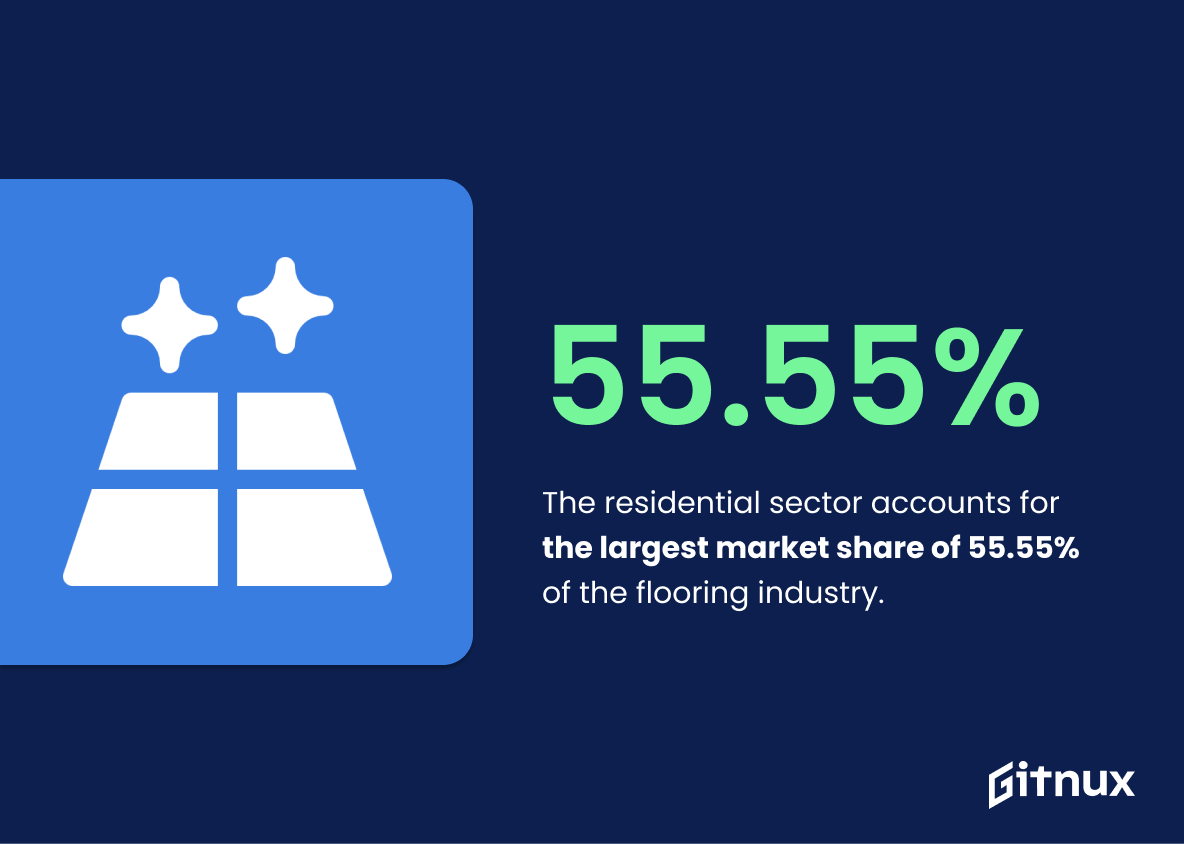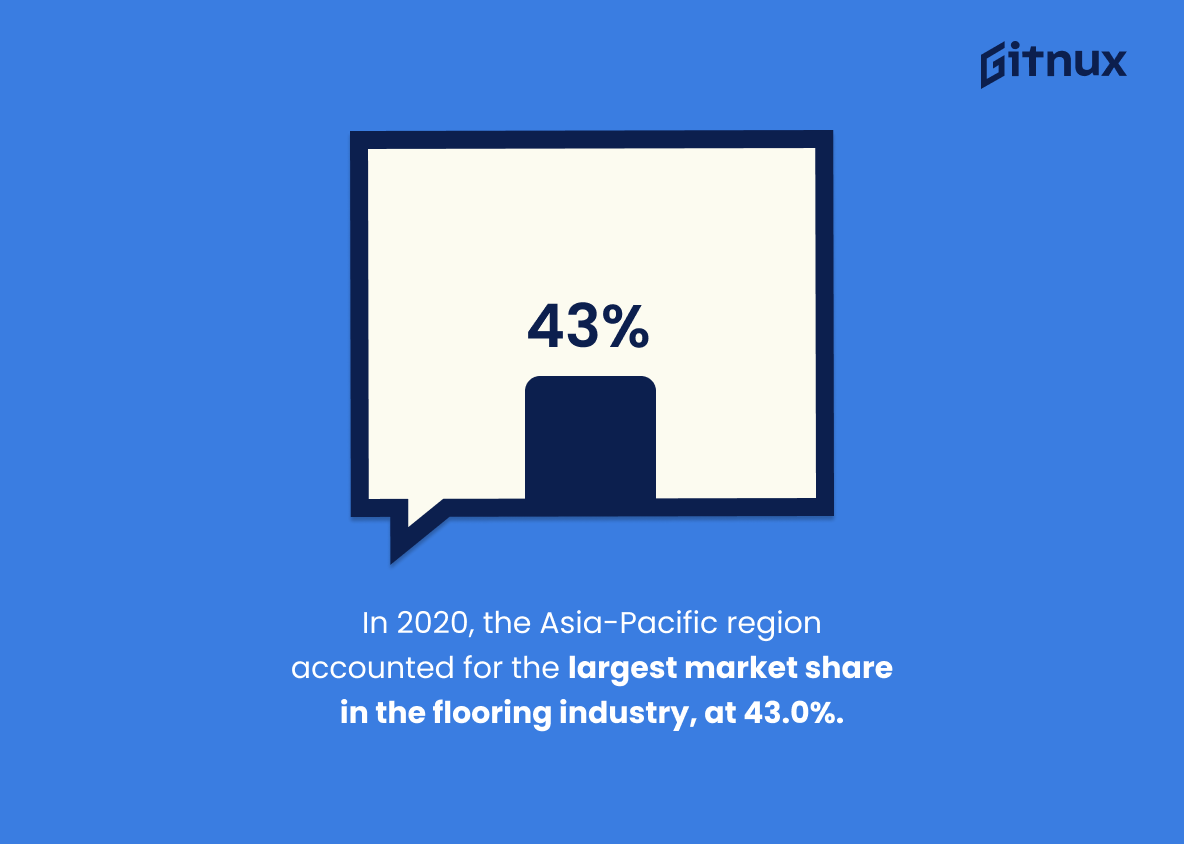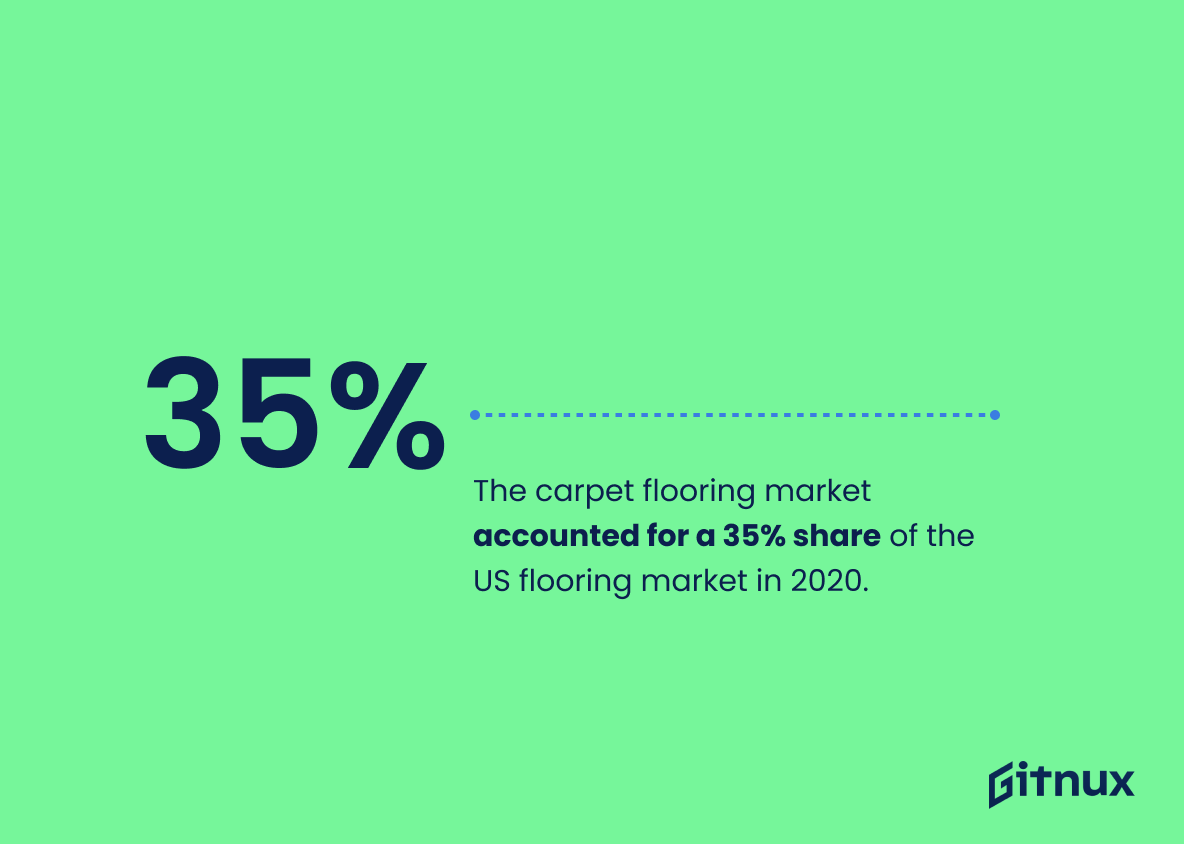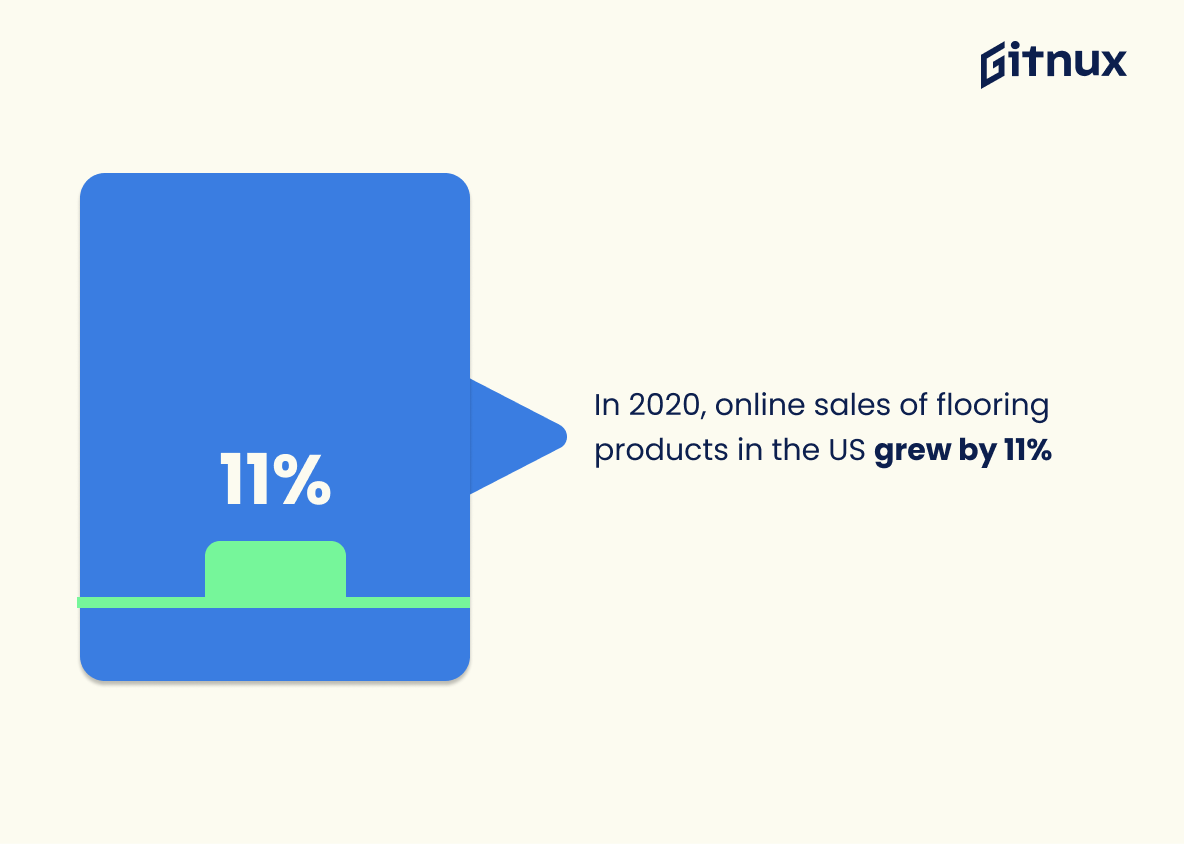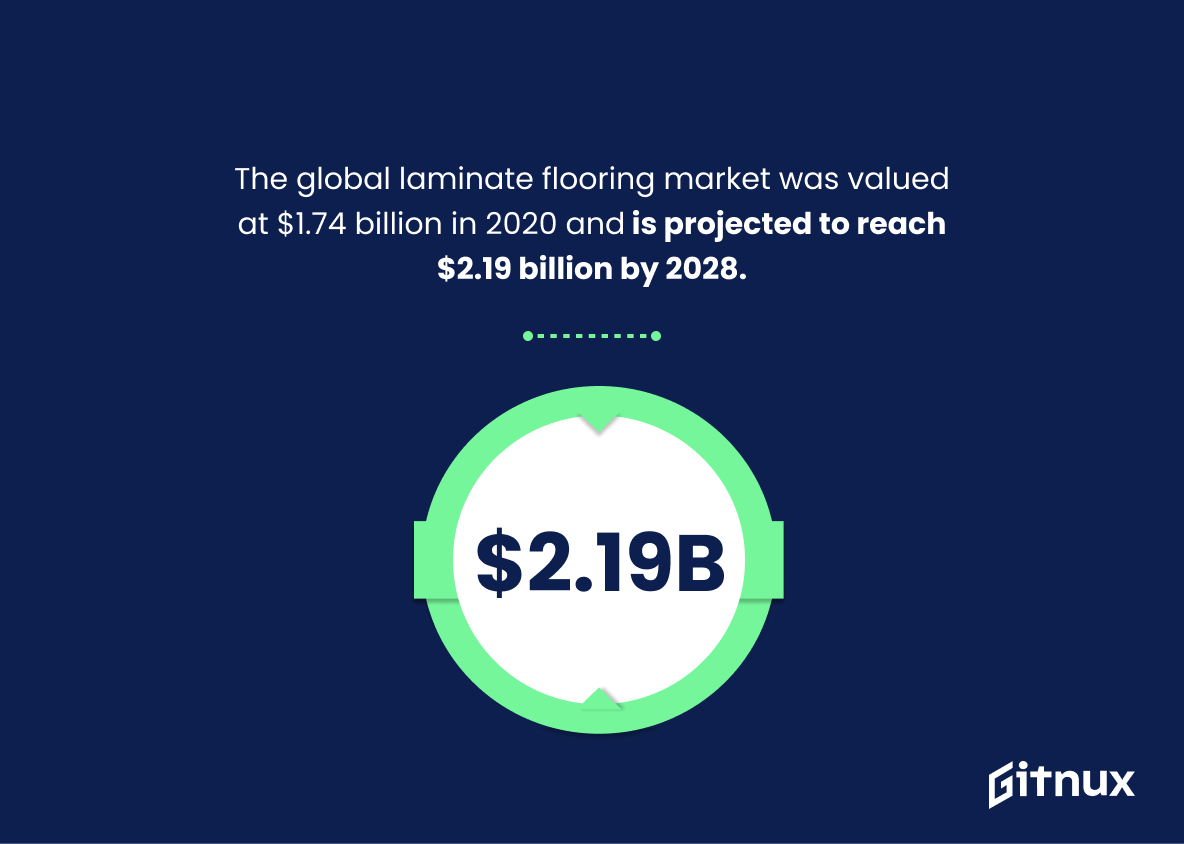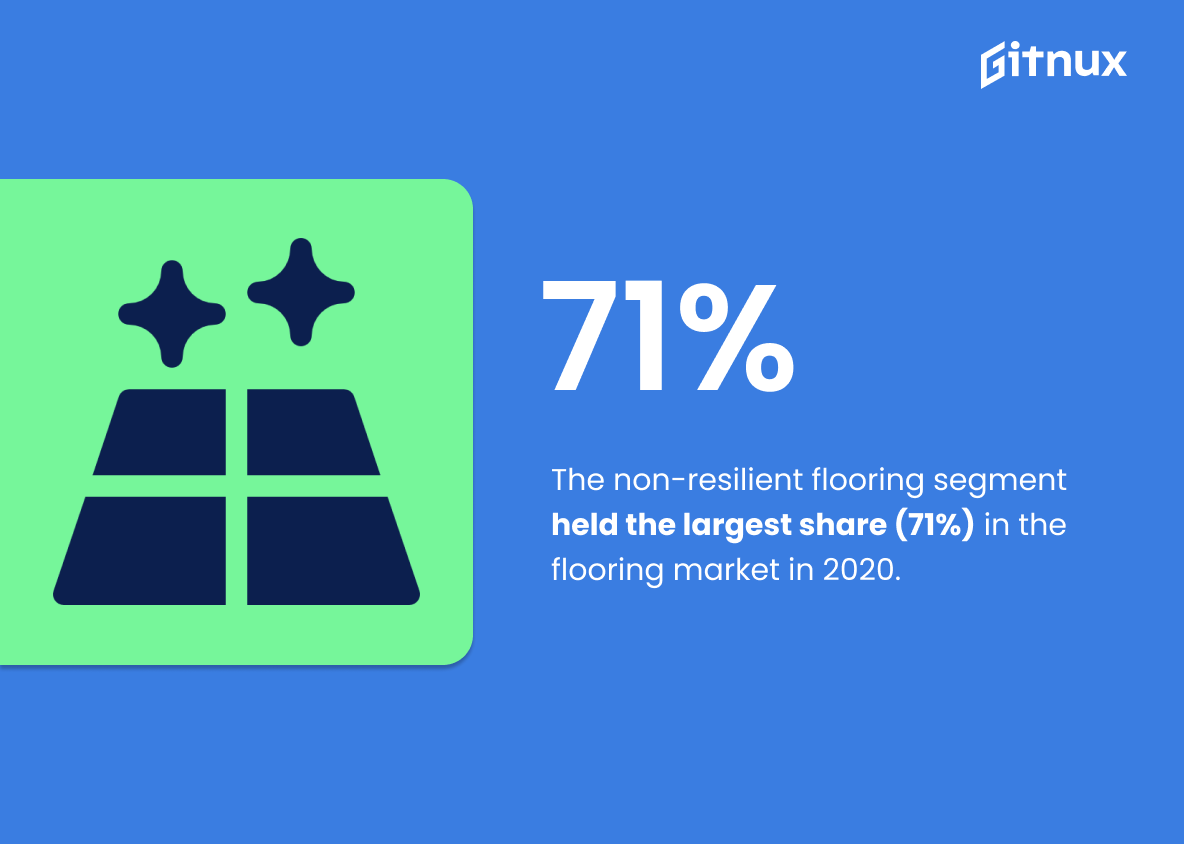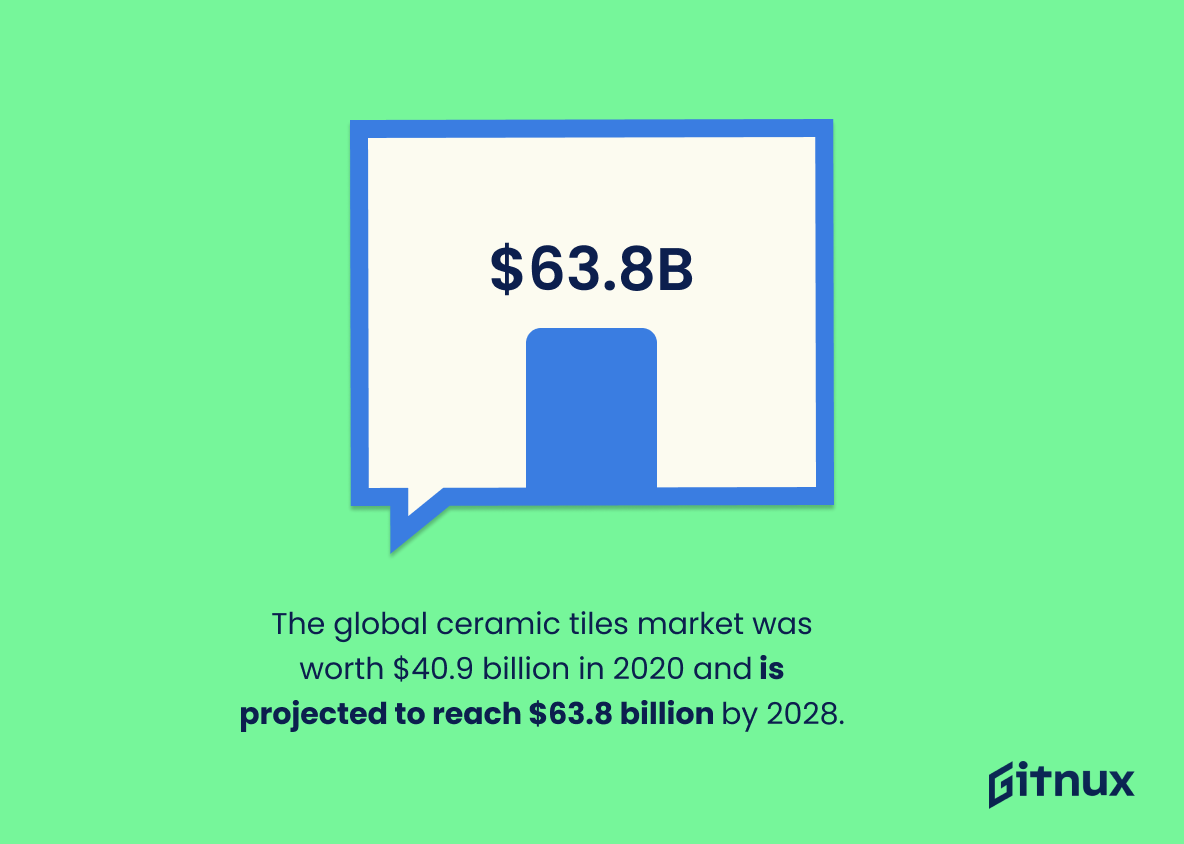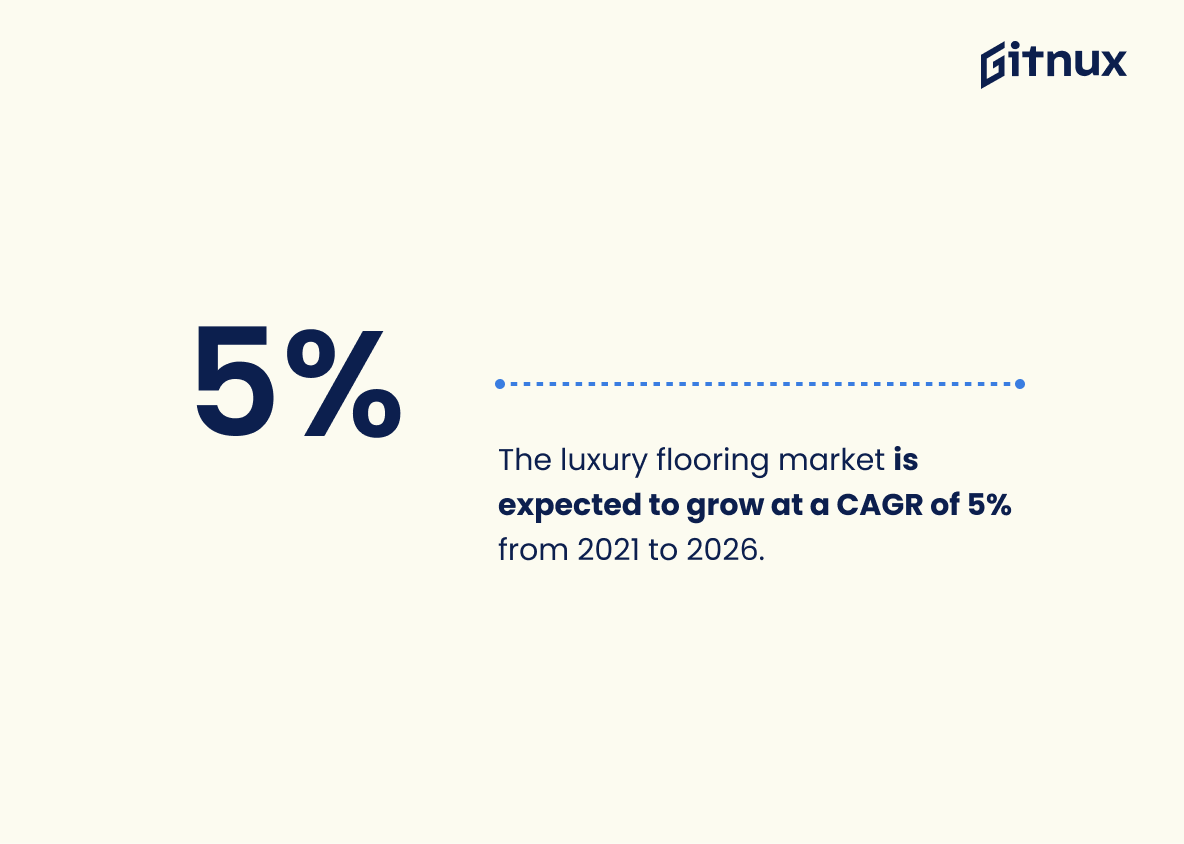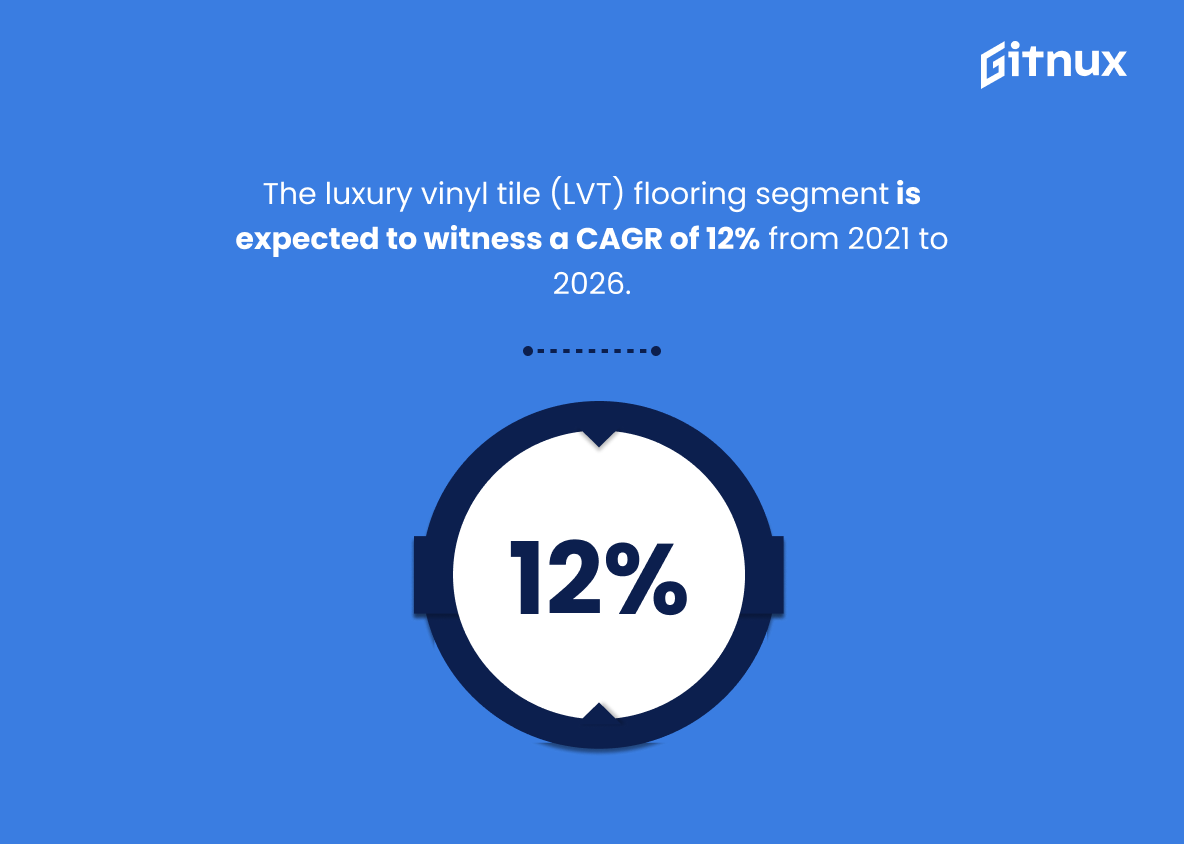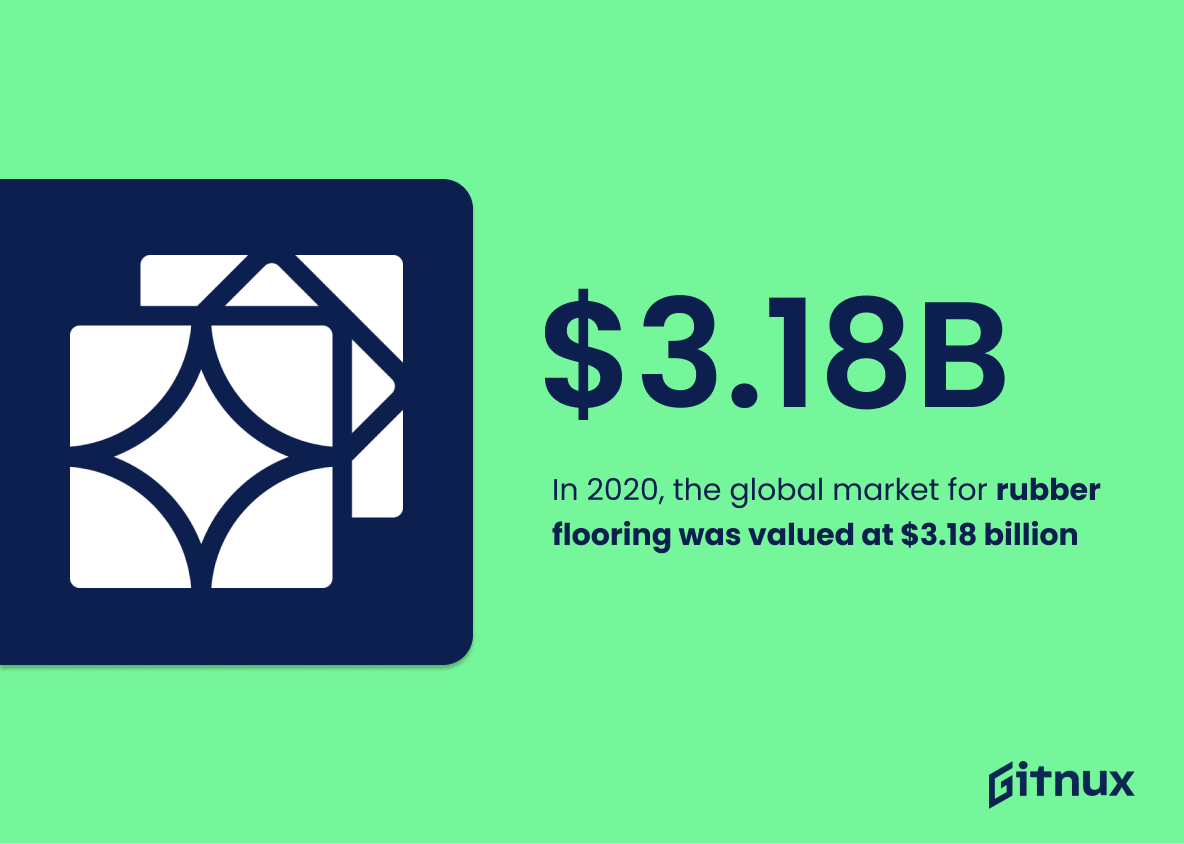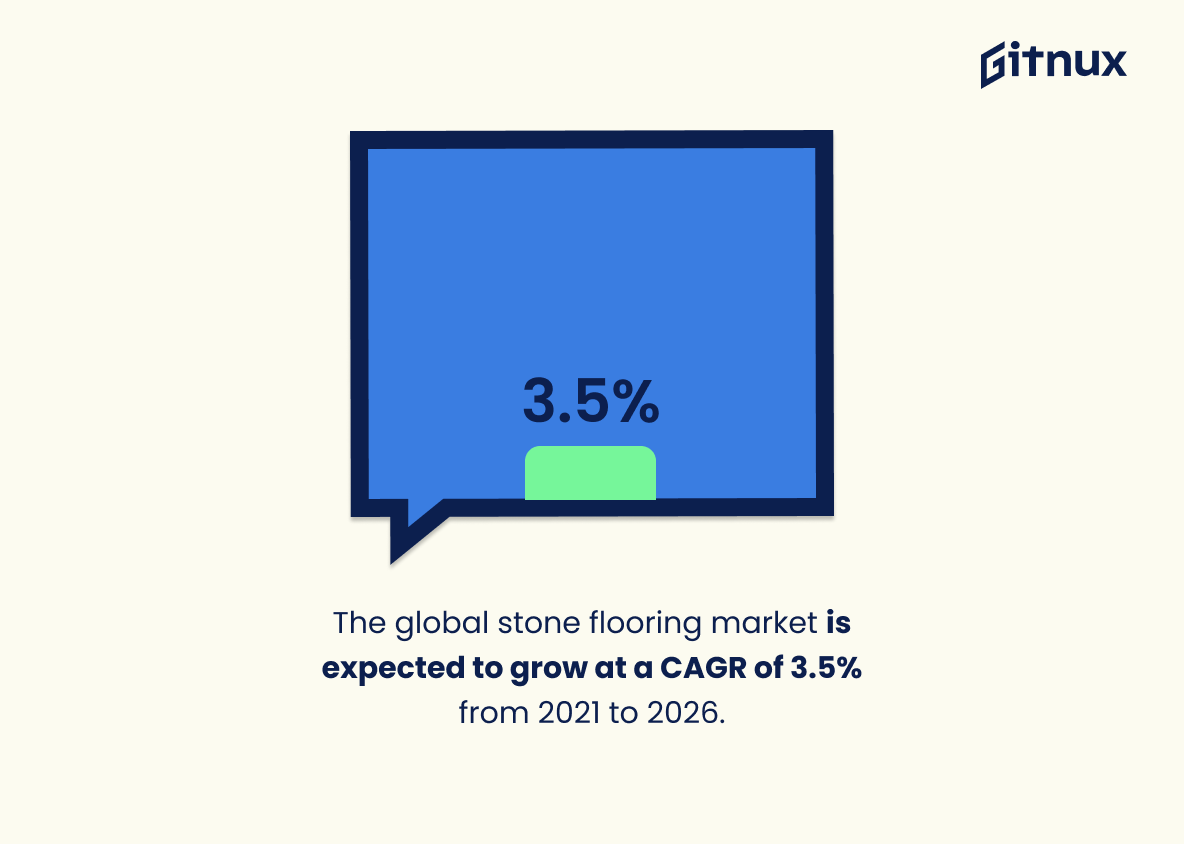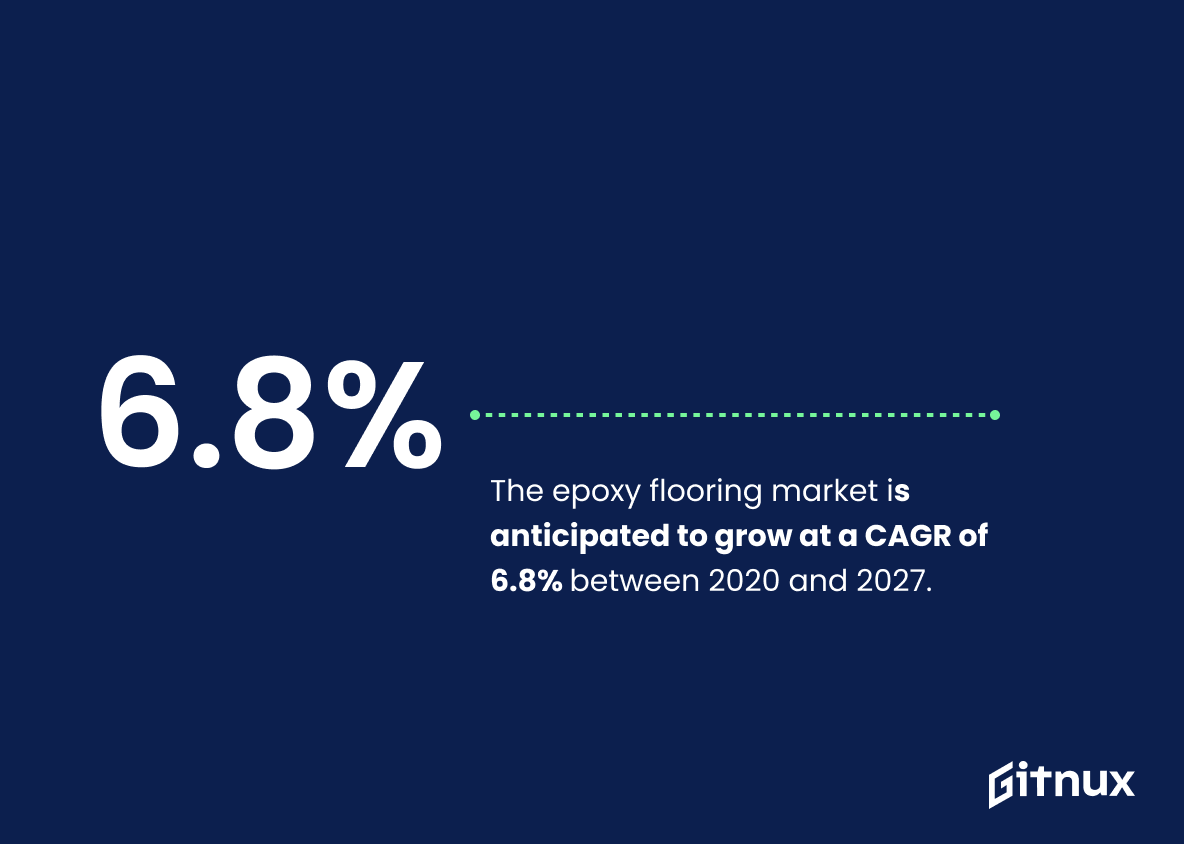The global flooring market was valued at $388.24 billion in 2020 and is expected to grow at a CAGR of 5.44% from 2021 to 2028, according to Market Research Future (MRF). The residential sector accounts for the largest market share of 55.55%, followed by commercial and industrial sectors respectively. In 2020, the Asia-Pacific region accounted for 43% of the total flooring industry revenue due its large population base and increasing demand for luxury products such as hardwood floors, LVT tiles, carpets etc., while Europe held 34.62% share in wooden flooring alone that same year.
In terms of product type segmentation, non-resilient materials like wood or stone hold 71% share in overall sales whereas resilient materials such as rubber or epoxy account for 29%. Hardwood floors were estimated at $45.6 billion in 2019 with an anticipated growth rate up to 64$04 billion by 2027; similarly Luxury Vinyl Tiles (LVT) had a value worth 17$52 Billion which is projected to reach 37$21 Billion by 2027; carpeted floors have 35 % shares within US markets only but are expected witness 2$1 percent CAGR between 2021 &2026 ; eco friendly options also saw significant rise with 27&9billion dollars valuation back then ,which will be 45 billions till 2028 . Online sales grew 11 percent last year too . All these factors combined make this industry one full potential investment opportunity.
This statistic is a testament to the immense size and scope of the flooring market, highlighting its importance in the global economy. It serves as a reminder of the immense potential of the industry, and the opportunities it presents for businesses and consumers alike. It also serves as a benchmark for the industry, providing a point of reference for future growth and development.
The flooring market is expected to grow at a CAGR of 5.44% from 2021 to 2028.
This statistic is a crucial indicator of the potential of the flooring market in the coming years. It shows that the industry is expected to experience steady growth, which could be a great opportunity for businesses to capitalize on. With a CAGR of 5.44%, the flooring market is likely to be a lucrative investment for those looking to expand their operations or enter the industry. This statistic is a valuable insight into the future of the flooring industry and should be taken into consideration when making decisions about investments in the sector.
Flooring Industry Statistics Overview
The residential sector accounts for the largest market share of 55.55% of the flooring industry.
This statistic is a crucial indicator of the flooring industry’s success, as it reveals that the residential sector is the most profitable market for flooring products. It is a testament to the industry’s ability to meet the needs of homeowners and provide them with quality flooring solutions. This statistic is also a valuable insight into the industry’s overall performance, as it shows that the residential sector is the most important market for flooring products.
In 2020, the Asia-Pacific region accounted for the largest market share in the flooring industry, at 43.0%.
This statistic is a testament to the immense potential of the Asia-Pacific region in the flooring industry. It highlights the region’s immense growth and its ability to capture a large portion of the market share. This statistic is a valuable insight into the industry and can be used to inform decisions and strategies for businesses looking to capitalize on the region’s potential.
The carpet flooring market accounted for a 35% share of the US flooring market in 2020.
This statistic is a testament to the carpet flooring market’s impressive performance in the US flooring market in 2020. It highlights the fact that carpet flooring is still a popular choice among consumers, despite the emergence of other flooring options. This statistic is an important indicator of the current state of the flooring industry and provides valuable insight into the trends and preferences of consumers.
In 2020, online sales of flooring products in the US grew by 11%
This statistic is a testament to the success of the flooring industry in the US in 2020, despite the challenges posed by the pandemic. It shows that the industry was able to adapt to the changing market conditions and capitalize on the increased demand for online shopping. This is an encouraging sign for the industry, and a reminder of the importance of staying ahead of the curve in order to remain competitive.
The global laminate flooring market was valued at $1.74 billion in 2020 and is projected to reach $2.19 billion by 2028.
This statistic is a testament to the growth of the laminate flooring market, indicating that it is a lucrative industry that is expected to continue to expand in the coming years. It is an important piece of information for anyone interested in the flooring industry, as it provides insight into the current and future state of the market. Furthermore, it can be used to inform decisions about investments, product development, and marketing strategies.
The non-resilient flooring segment held the largest share (71%) in the flooring market in 2020.
This statistic is a testament to the fact that non-resilient flooring is the most popular choice among consumers in the flooring market. It is a clear indication that this type of flooring is preferred for its durability, affordability, and aesthetic appeal. This statistic is important to consider when discussing the flooring industry, as it provides insight into the preferences of consumers and the overall market trends.
The global ceramic tiles market size was valued at $40.9 billion in 2020 and is expected to reach $63.8 billion by 2028.
This statistic is a powerful indicator of the potential of the flooring industry. It shows that the ceramic tiles market is growing rapidly, with a projected increase of over 50% in the next eight years. This is a clear sign that the flooring industry is a lucrative and expanding sector, and one that is worth investing in.
The luxury flooring market is expected to grow at a CAGR of 5% from 2021 to 2026.
This statistic is a valuable insight into the future of the luxury flooring market, indicating that it is likely to experience steady growth over the next five years. This information is essential for anyone interested in the flooring industry, as it provides an indication of the potential for success in the sector. Furthermore, it can be used to inform decisions about investments, product development, and marketing strategies.
By 2028, the market for bamboo flooring is expected to grow at a CAGR of 5.2%, reaching an estimated value of $7.45 billion.
This statistic is a testament to the potential of bamboo flooring in the flooring industry. It shows that the market for bamboo flooring is expected to grow significantly over the next few years, reaching an estimated value of $7.45 billion by 2028. This indicates that bamboo flooring is a viable option for those looking to invest in the flooring industry, and provides a valuable insight into the potential of this type of flooring.
The luxury vinyl tile (LVT) flooring segment is expected to witness a CAGR of 12% from 2021 to 2026.
This statistic is a testament to the growing popularity of luxury vinyl tile (LVT) flooring, indicating that it is likely to remain a major player in the flooring industry for years to come. With a projected CAGR of 12%, LVT flooring is poised to be a major contributor to the industry’s growth in the near future. This statistic is an important indicator of the industry’s future and provides valuable insight into the direction of the flooring industry.
In 2020, the global market for rubber flooring was valued at $3.18 billion
This statistic is a testament to the immense size of the rubber flooring market, demonstrating its importance in the flooring industry. It highlights the fact that rubber flooring is a major player in the industry, and that it is a lucrative market for businesses to invest in. Furthermore, it shows that the demand for rubber flooring is high, and that it is a popular choice for many consumers. This statistic is a valuable insight into the flooring industry, and is essential for anyone looking to gain a better understanding of the industry.
The global stone flooring market is expected to grow at a CAGR of 3.5% from 2021 to 2026.
This statistic is a valuable insight into the future of the flooring industry, providing a glimpse into the potential growth of the market over the next five years. It is an important indicator of the industry’s health and can be used to inform decisions about investments, product development, and marketing strategies. By understanding the projected growth of the stone flooring market, businesses can better plan for the future and capitalize on opportunities for growth.
The epoxy flooring market is anticipated to grow at a CAGR of 6.8% between 2020 and 2027.
This statistic is a key indicator of the potential for growth in the flooring industry. It shows that the epoxy flooring market is expected to expand at a steady rate over the next seven years, indicating that the industry is likely to remain a viable and profitable option for businesses and homeowners alike. This statistic is an important piece of information for anyone looking to invest in the flooring industry, as it provides a clear indication of the potential for growth and profitability.
Conclusion
The flooring industry is a rapidly growing market, with the global flooring market valued at $388.24 billion in 2020 and expected to reach USD 493.82 billion by 2028, according to Market Research Future (MRF). The residential sector accounts for the largest share of 55.55%, while Asia-Pacific region holds 43% of the total market share in 2020. Hardwood flooring was valued at $45.6 billion in 2019 and luxury vinyl tiles (LVT) were worth 17.52 billion that same year; both are projected to grow significantly over time as well as other types such as carpet, laminate, eco-friendly, luxury and bamboo floors which have seen an increase in demand due to their durability and aesthetic appeal respectively . Online sales also saw an 11% growth rate last year indicating a shift towards digitalization within this industry segment too In addition , commercial installations are anticipated to witness 2 . 1 % CAGR growth between 2021 -2026 while Europe held 34 . 62 % of wooden floorings’s global shares last year Overall , it can be concluded that there is immense potential for further development within this field given its current trends across various regions worldwide
References
0. – https://www.industryarc.com
1. – https://www.kennethresearch.com
2. – https://www.fortunebusinessinsights.com
3. – https://www.floortrendsmag.com
4. – https://www.whatech.com
5. – https://www.researchandmarkets.com
6. – https://www.prnewswire.com
7. – https://www.industryresearch.co
8. – https://www.researchnester.com
9. – https://www.freedoniagroup.com
10. – https://www.globenewswire.com
